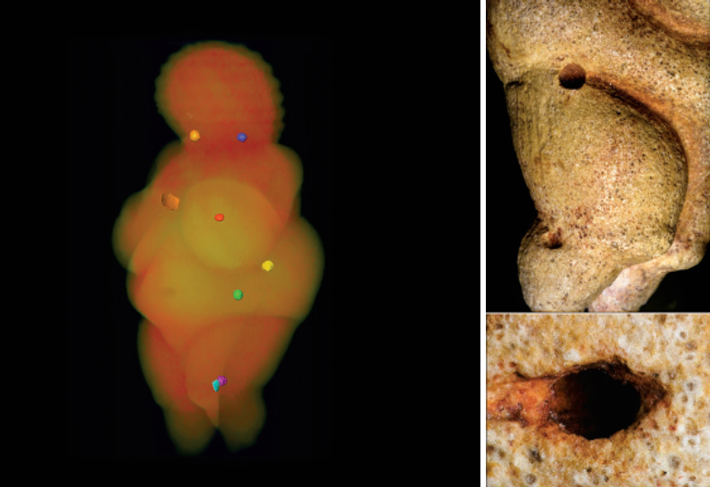For more than a century since the 30,000-year-old stone sculpture known as the Venus of Willendorf was found on the banks of the Danube River in its eponymous village, many unknowns have swirled around the 4.3-inch-tall figurine. But the lingering mystery of where the material used to make the sculpture originated has now been solved, opening new avenues of research into how far people of the Gravettian period (ca. 30,000–22,000 years ago) traveled. Using a technique called high-resolution micro-computed tomography, a team led by Gerhard Weber of the University of Vienna scanned the figurine.

Several other figurines with which it was found were made of ivory, but the Venus was fashioned from oolitic limestone, a type of sedimentary rock whose composition varies greatly by location. “Oolite acts like a kind of geological fingerprint,” Weber says. The team expected to find that the stone had been sourced within 100 miles of Willendorf. Instead, to their surprise, they discovered that it had come from some 450 miles away, near Sega di Ala in the Italian Alps. The researchers believe the figurine was likely carved there before being carried across the mountains. “While this journey could have taken years, decades, or centuries,” says Weber, “finding a way through the Alps might not have been as big a barrier in the Ice Age as we always imagine.”

Clockwise from left: Colored dots showing embedded limonites; limonite cavities on haunch and leg; existing hole enlarged for navel
The high-resolution scans also allowed researchers to see details of structural components of the sculpture that have always been puzzling. They now know that hemispherical cavities on the surface of the limestone were once filled by limonites, or iron oxide concretions, that likely fell out during the carving process because they are harder than the limestone. One of these cavities is in the center of the figurine’s stomach where the navel should be. “There are some traces, such as furrows from a tool, that suggest this limonite could have been removed intentionally, which would mean the artist already had a very precise idea of the later shape of the figurine,” says Weber. “That would tell us a lot about these Paleolithic people’s thinking.”










